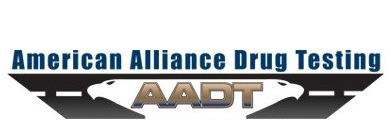Hair tests help trucking firms keep drug users off the road
Milwaukee Journal Sentinel, 7-29-12
Over the last four years, some 38,000 would-be truck drivers applying at Schneider National Inc. have had their hair snipped for a drug test. Of those, 1,411 failed. The analysis detected cocaine, marijuana or other banned substances. Yet more than 90% of those 1,411 applicants were able to pass a urine test – the government-mandated, industry standard used to look for drugs.
In a way, that’s not surprising. Molecules of methamphetamine, tetrahydrocannabinol and other drugs remain in urine for only a few days.
They can stay bound in hair for months or longer.
Not only that. Schneider tells applicants in advance that they’ll be tested. A little abstinence and – bingo – clean urine sample. “The urine-based drug test is simply not catching chronic drug users,” said Don Osterberg, senior vice president of safety and security at Schneider, a Green Bay, Wis.-based firm.
So Schneider and a handful of other trucking companies, including Marshfield’s Roehl Transport Inc., have added haircuts to their screening process. That’s meant that thousands of drug users aren’t wheeling 80,000-pound trucks down the highway for Schneider, Roehl, J.B. Hunt and other firms. “The bad news,” said Osterberg, “is they are likely driving a truck for a carrier who doesn’t require hair testing.”
Now, Schneider and others in the industry want the U.S. Department of Transportation (DOT) to put its stamp of approval on hair testing and allow test results to be shared with other trucking firms.
Currently, Schneider executives say, that’s illegal because while the government allows hair testing, it’s not officially recognized. “That’s one of the areas that need to be fixed,” Osterberg said.
Hair testing has its limits and its critics. It doesn’t detect recent drug use and may show positive results for smoked drugs when someone has merely been in the same room where they were consumed, according to the National Institute on Drug Abuse.
In Wisconsin, hair testing hasn’t been accepted by the state Labor and Industry Review Commission, which decides appeals in cases involving unemployment insurance, workers’ compensation and equal rights.
The U.S. Department of Health and Human Services (DHHS) is committed to studying testing methods beyond the one it now approves – urine – but has said hair and other specimens raise significant issues that may take more time to resolve.
Even without a federal imprimatur, though, the advantages of hair screening – not only does it show drug use over a much longer period than urine, but the test is more difficult to cheat – have helped spur increasing adoption in trucking.
“It’s a deterrent,” said John Spiros, vice president of safety and claims management at Roehl, which began testing hair a year ago. “When people know that you’re doing hair-follicle testing, a lot of them won’t even apply.”
There’s a huge volume of churn in trucking. Industry-wide, annual driver turnover for truckload carriers – the long-haul, big-load fleets – is running somewhere between 70% and 90%.
That means the companies as a group are replacing more than seven out of 10 drivers a year. Some are leaving trucking, often after just a short time in the industry. Most are hopping from one company to another.
Either way, firms such as Schneider, with more than 11,000 drivers, or Arkansas’ J.B. Hunt, with 10,500, do lots of hiring – and face lots of chances to hire someone who uses drugs.
Urine test easy to cheat
Urine testing alone will miss many of them. Beyond the narrow window on drug use that it offers, the test can be subverted easily, a 2007 investigation by the Government Accountability Office (GAO) found. Posing as commercial drivers, the undercover investigators went to 24 approved urine-collection sites around the country. They gained entry to all 24 with bogus driver’s licenses, showing that “a drug user could send someone to take a drug test in their place using fake identification.” At three quarters of the sites, the collection room offered running water or other means to dilute or adulterate a specimen.
And at eight of the sites, the investigators walked in – undetected – with purported drug-masking agents they bought on the Internet. It’s easy to find these things on the web, where companies tout products such as ClearTest, Quick Fix and Ultra Pure synthetic urine. “Guaranteed to beat any of the urine tests,” one firm promises. “ . . . Just add warm water!”
For the GAO investigators, the promises proved true. Every drug-masking product they used went undetected by the screening lab, the agency reported. “A urine-based drug test is very easy to defeat,” Osterberg said. “ . . . There’s a whole cottage industry out there.”
Too risky to hire
Gordon Klemp, managing partner of a firm that publishes research and analysis on trucking industry wages, estimates that 6% to 8% of driver applicants use drugs. He applauds use of hair testing, saying that hiring drug users is “a risk that carriers simply can’t take.” From a business standpoint, the risk is financial liability if a drug-using driver is involved in an accident that kills or maims someone.
Failure to take the extra step of hair testing, even though it’s not required by the government, could arguably expose trucking companies to such risk, said John Duncan Varda, a Madison attorney with more than 40 years of experience handling transportation matters.
Don Devitt, a Chicago attorney whose clients include carriers, said the concern is real, though more likely to be an issue in the future than now. But he added that “juries don’t look kindly on trucking companies,” and it’s prudent for firms to show they’re doing all they can to screen out drug users, as Schneider, Roehl and Hunt are doing. “You don’t want to be the first one to be burned, and there will be a first one to be burned,” Devitt said.
Said David Saunders, chief executive at Compliance Safety Systems, a Texas firm that does drug testing, including hair, “Remember, a (plaintiff’s) attorney’s job is to get the jury emotional – ‘How could you, how could you allow this driver to drive?’”
The trucking industry recently won a related victory in Congress, which ordered the DOT to establish a national database of drivers’ positive results on drug and alcohol tests. The database is to be up and running within two years, and motor carriers have to tap into it when they screen driver applicants.
As things stand, however, it will show only the results of urine tests.
Osterberg said Schneider will encourage the DOT, as it frames the regulation that will govern the database, to include hair test results.
Industry associations like CCTA and ATA want hair testing in the database. But Abigail Potter, a research analyst with the organization, said that probably won’t happen without further Congressional action as organized labor – the Teamsters and other small driver based associations – are likely to fight this type of testing claiming it is discriminatory against minorities due to environment and physiology.



